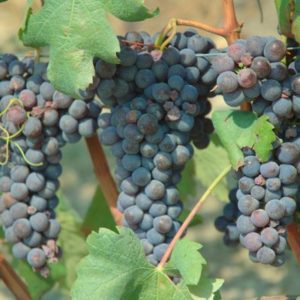If you love wines with elegance, fragrance and longevity, then you’ll love the just-released 2012 Brunellos. And even though I’m one of the biggest critics of the Consorzio’s Brunello vintage classifications (I find most vintages have been overrated), when it comes to 2012’s five-star rating, I completely I agree.

Defying the intense heat of the growing season, many 2012s have the vibrancy usually found in cooler vintages. They boast juicy red berry fruit, noble tannins and impeccable balance that will allow them to age well for years. Out of the 140 Brunello 2012s I tasted so far, I rated 88 wines 90 points or more, with 20 of these getting 94 points or higher. I was pleasantly surprised to see a return to finesse, enticing aromas and generally lower alcohol levels when compared to other recent releases.
The 2012s even have more consistent quality across the denomination than the highly acclaimed 2010s. The latter were a mixed bag divided between majestic wines boasting structure and finesse, and subpar wines marred by low acidity, cooked fruit and alcohol of 15% abv or more.
Quality is more uniform in 2012, but in terms of weather, 2012 was an undeniably difficult year. Unstable conditions included a cold, wet winter and an extremely hot, dry summer marked by late rains. But the extended heat wave was gentler on the grapes than the turbulent temperature changes of other past vintages.
According to Andrea Costanti of the Conti Costanti estate, “Unlike 2011, when scorching temperatures came on suddenly in August and left the grapes defenseless to adjust to the extreme heat, in 2012 the entire summer was hot and dry, so the grapes had the whole growing season to adapt. Grape quality was outstanding, with small bunches and small berries, which are ideal for Sangiovese.”
Constanti continued, “2012 was a great vintage in this part of the growing zone, where high vineyard altitudes generated fresher temperatures,” adding that in order to retain fresh acidity, he harvested a bit earlier than usual, starting on September 20th. The estate, which only makes a riserva bottling in exceptional vintages, will be releasing a 2012 riserva next year.
Though quality is high, quantity isn’t. 2012 will be remembered as the smallest crop in the last ten years, a result of heat and intense drought that reduced yields. Overall production was down 14% compared to 2011, but many producers have told me their production was far lower. “I had about 30% less grapes than normal in 2012,” says Costanti.
Due to low yields, producers performed less grape thinning than normal—a major factor in the finesse and balance behind many of the 2012s. Over the last two decades in Montalcino and other parts of Italy, excessive grape thinning combined with the hotter summer temperatures has often resulted in wines with lower acidity and higher alcohol levels. Excessive hang time—letting the grapes stay on the vine too long to try to further increase polyphenolic ripening for concentration—is another practice that proved especially detrimental in 2012.
“2012 was definitely a grape grower’s vintage, because what you did or didn’t do in the vineyards made all the difference,” said Filippo Paoletti, the winemaker at leading estate Lisini. “The intense, prolonged heat and drought of 2003 caught us all off guard, but at least we learned and were better prepared in 2012. Leaf canopy management was crucial, as was working the soil to keep churning up the humidity below.
“And harvest time was critical for acidity levels. I actually did two separate harvests, seven days apart. The earliest one was to capture fresh acidity and the later one for phenolic ripeness, color and structure,”
Paoletti and other producers point out that younger vines whose roots couldn’t reach the moisture below the surface suffered the most.
Less suitable parts of the growing zone, especially vineyards in lower altitudes, also suffered in 2012. It’s no coincidence that almost all of the highest scoring wines come from estates with the highest altitude vineyards around the town of Montalcino and around Sant’Angelo in Colle, where evening breezes cooled the grapes.
Although some of the just released Brunellos reflect the torrid temperatures by displaying evident alcohol and lower acidity, they are fortunately a minority. Overall, 2012 is a Sangiovese lover’s vintage.
Check out my reviews and scores by inputing Brunello 2012 in the search box in the ITALIAN WINE REVIEWS section.
For articles on other vintages click here: Brunello vintage report
Brunello Brunello vintage report Montalcino Sangiovese
Last modified: January 1, 2024







